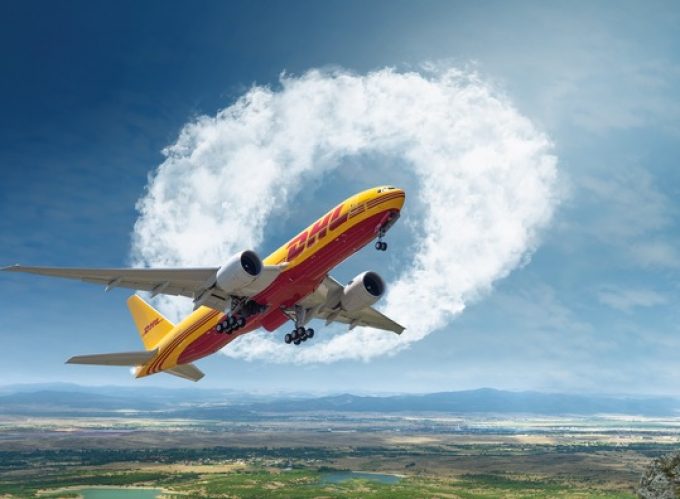NOCC adds third ‘ammonia-ready’ PCTC newbuild orderbook
Norwegian Car Carriers (NOCC) has added a third ‘ammonia-ready’ 7,000ceu LNG-powered ship to its two-vessel, ...
TFII: SOLID AS USUALMAERSK: WEAKENINGF: FALLING OFF A CLIFFAAPL: 'BOTTLENECK IN MAINLAND CHINA'AAPL: CHINA TRENDSDHL: GROWTH CAPEXR: ANOTHER SOLID DELIVERYMFT: HERE COMES THE FALLDSV: LOOK AT SCHENKER PERFORMANCEUPS: A WAVE OF DOWNGRADES DSV: BARGAIN BINKNX: EARNINGS OUTODFL: RISING AND FALLING AND THEN RISING
TFII: SOLID AS USUALMAERSK: WEAKENINGF: FALLING OFF A CLIFFAAPL: 'BOTTLENECK IN MAINLAND CHINA'AAPL: CHINA TRENDSDHL: GROWTH CAPEXR: ANOTHER SOLID DELIVERYMFT: HERE COMES THE FALLDSV: LOOK AT SCHENKER PERFORMANCEUPS: A WAVE OF DOWNGRADES DSV: BARGAIN BINKNX: EARNINGS OUTODFL: RISING AND FALLING AND THEN RISING

UPDATED 17.2.23 TO INCLUDE COMMENT FROM STAN WRIAGHT.
Airlines may have to choose between growth and the environment, as shipper demands for decarbonising intensify and production of sustainable aviation fuel remains low.
Celine Hourcade, founder and MD of Change Horizon, told The Loadstar the aviation sector’s hopes of both reaching net zero by 2050, while still at least doubling its traffic each year, was “wishful thinking”.
She said: “My concerns are that SAF is very much still in the research and development phase, and we are far from sure we’ve enough for all the other sectors betting on it. I would not be surprised if access was limited to essential activities.”
Ecommerce is a high growth market, with some 80% of cross-border e-commerce transported by air, but IATA said demand for capacity was surging, with 59% of e-commerce shippers saying air cargo only partially meets their needs.
Responding to this, airlines have been adjusting their fleets and looking for greater market share in the booming sector, with regional airports also benefiting from demand. But Ms Hourcade said that while sectors such as pharma may get capacity in a SAF-restricted market, e-commerce could struggle.
She added: “E-commerce may find itself at the back of the queue, if [we] cannot meet SAF demand. I cannot see governments prioritising e-commerce access to limited SAF stock.
“E-commerce logistics, as we know it, is not sustainable. It has a high carbon footprint, waste from unnecessarily excessive packaging, product waste from inadequate return logistics flows and there are social impacts.”
However, Stan Wraight, CEO of consultancy SASI, said: “This view is ill-informed, that e-commerce will suffer, versus say Pharma which has an infinitesimal share of global air cargo movements compared to e-commerce.
“E-commerce has a much higher yield for airlines, and has a higher volume to weight ratio (1:8 or even 1:10) this means aircraft volume out before weight, equating to less fuel burn etc.
“Sustainability is on everyone’s mind and rightly so, and SAF is only one factor amongst many that are being looked at by professional aviation stakeholders to reduce both CO2 and Nox emissions.”
A spokesperson for FlyORO, a specialist in the jet fuel supply chain, agreed it was expecting “a SAF feedstock supply crunch”.
Pointing to increasing demand from aviation, as well as heavy trucking and liner shipping, jet fuel supply chain company FlyORO told The Loadstar that, given the present rate of SAF production, a global supply crunch was already likely, driving the costs to access SAF upwards.
“There is high demand for SAF feedstocks – particularly plant oils, cooking oils and animal fats, which can be refined to make renewable diesel and SAF,” said the spokesperson.
“This influences the cost of production, leading to a hefty price for usage of renewable fuels (at least twice as expensive), which then leads to the dilemma of who pays the premium and if governments are helping alleviate these pain points.”
A DHL spokesperson said the company saw no “direct correlation” between e-commerce and SAF availability and access, telling The Loadstar: “SAF, and other sustainable fuels, will play an important role in decarbonising transport of cargo, including e-commerce shipments.
“Our GoGreen Plus service is based on an insetting approach, where customers are offered solutions for minimising logistics-related emissions along the entire supply chain. This is facilitating a sustainable fuel switch, whereby carriers consume sustainable fuel on behalf of DHL. Subsequently, the resulting Scope 3 emission reductions are passed on to DHL to be allocated to cargo owners.”
Carriers have faced increasing scrutiny from shippers, with one shipper on a panel at the World Cargo Summit in Abu Dhabi this month urging airlines to improve their routings.
“Shippers I spoke with in several sectors are demanding carbon information from air cargo, and when they don’t have it, they try to calculate it themselves,” said Ms Hourcade. “When they do this, they pay attention to the routing as the distance flown is an important element of the calculation.
“Then they can start challenging airlines on their network strategies and routings, in addition to the type of aircraft and load factors.”
Comment on this article